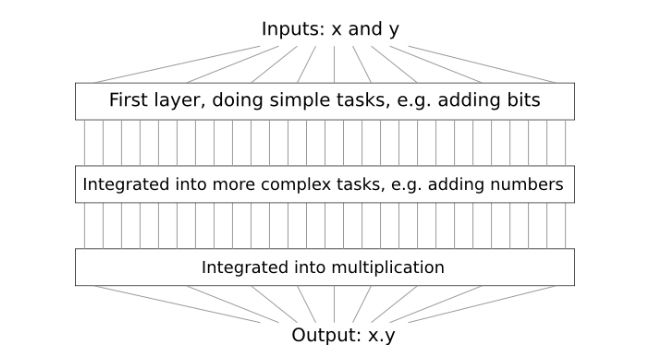
Machine learning is the future of automation. Millions of tasks performed by humans on a daily basis will be eventually replaced by neural networks trained. Even now, machine learning algorithms shape your life.
The job market is shifting to accommodate this new technology, and those who are capable of programming their own networks (or integrating with existing ones) are in high demand.
There has never been a better time to dive into machine learning. Here are six useful tutorials and resources to help you learn about machine learning.
1. The Coding Train
Anyone familiar with Daniel Shiffman’s YouTube channel will know about his excellent tutorials on both processing and p5.js. His fun style of real-time teaching has helped countless people learn the basics of coding.
As well as his many coding challenge videos covering single topics, Shiffman also has an incredibly thorough machine learning playlist.
These videos are especially useful to those wishing to learn Java or JavaScript as their primary language. Happily, the concepts covered in the series apply to any language of your choosing.
The Nature of Code, Shiffman’s much-loved book, devoted its final chapter to neural networks. It stands alone as an excellent introduction to the field. The work has been continued both on The Coding Train YouTube channel and his personal GitHub page.
The great strength of learning this way is Daniel Shiffman himself. A natural teacher, he gives clear examples of how code interacts with machine learning algorithms.
2. Machine Learning Crash Course
Google are big players in machine learning. Their Tensorflow open source platform is designed to open the subject to everybody in a variety of programming languages.
Google also have their own free Machine Learning Crash Course designed to teach both the fundamentals of machine learning, and how to use Tensorflow through APIs.
Each chapter of the course has video lectures along with the full text to support the content. As expected, it is an incredibly detailed curriculum. The course also offers interactive “Programming Challenge” pages where the code is presented dynamically in the browser where it can be both run and modified, before providing coding challenges to help you understand the module.
The curriculum also features “Playground Exercises” and chances to “Check Your Understanding”, comprising interactive visualizations of machine learning principles and questions based on the current topic.

It is hardly surprising that Google is a leader in this field, and for a free course, this one covers a lot of ground!
3. Siraj Raval
While there are many great YouTube teachers out there, few get the balance of excellent presentation, clear explanation of topics, and most importantly memes, quite as well as Siraj Raval.
His YouTube channel concentrates mostly on the Python programming language along with many principles essential for modern data science and machine learning. Siraj has a playlist of easy-to-follow videos on the subject of neural networks and machine learning. The variation between fast-paced single subject videos, and the longer live stream style project work cover both fundamentals, and how to apply them to data.
Siraj’s channel is especially useful for those already learning Python, and if you are looking to learn the language, these basic Python examples will help you pick up the fundamentals.
4. Neural Networks and Deep Learning

While video tutorials are a great way to learn, some folks prefer to learn from a book. Neural Networks and Deep Learning by Michael Nielsen doesn’t quite qualify as a print book as it uses embedded examples designed for the browser. It is, however, the clearest written explanation of not only the history of machine learning, but also how to learn the mathematics behind neural networks, that you’ll find.
The book follows a character recognition project from start to finish. Its pacing allows the reader to understand both how and why the network learns, along with the decisions and challenges they will face in putting together a functioning neural network.
Once again, the language of choice is Python, though the fundamentals are so thoroughly covered here that it is recommended reading for anyone with interest in machine learning.
5. Udacity Nanodegrees for Machine Learning
There are several in-depth “Nanodegrees” available on Udacity for machine learning. The highly recommended Become a Machine Learning Engineer course is an in-depth course which takes the student through machine learning principles via project work.
Each project is designed to emulate something an engineer would face in their work. Students enrolled in the course get access to Amazon Web Services (AWS) to deploy their projects.
The course costs $ 899 won’t be cheap by many people’s standards, but the benefit of having a relationship with your tutors along with the tools provided by the course will be invaluable to many.
6. Create a Mixed Curriculum
While everything on this list so far is perfect for advanced learning, many people will find even the fundamentals difficult. In this instance, creating a mixed curriculum of your own can be a great way to fill in all the gaps and ensure a robust knowledge base moving forward.
Reddit user pk7677 replied to a post on /r/MachineLearning with some sage advice:

The full post goes on to recommend creating your own personal projects. You should also keep an eye on new and developing areas of the field.
Deep Learning for Machine Learning
Whichever method you take with machine learning, be prepared for a long journey. The subject is by nature incredibly dense.
The popularity of machine learning has skyrocketed, and it’s due to improvements in processing power and computer science. There are no easy routes into the theory behind it. Now is the time to get to grips with future-proofed programming languages.
If you are a novice, choose a beginner-friendly programming language before diving into machine learning. You should also consider brushing up on your maths skills. Keep on learning, and good luck!
Read the full article: 6 Helpful Machine Learning Tutorials and Courses to Grasp the Essentials


